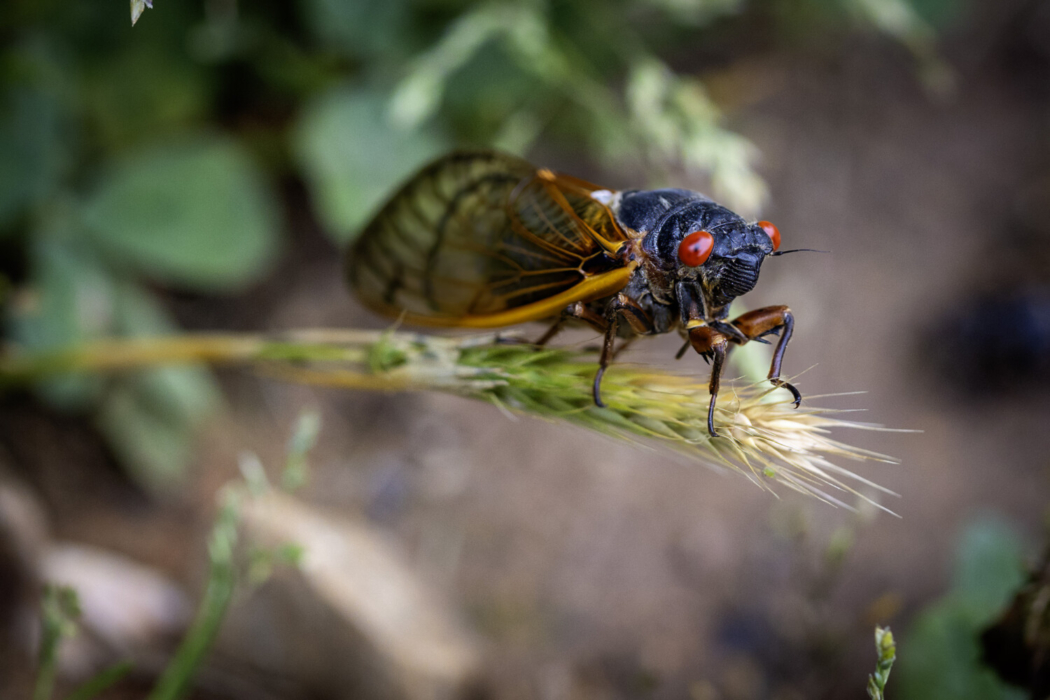Have you heard the buzz?
No, not news about the new restaurant down the street, your favorite sports team, or Taylor Swift — the audible buzzing sound that’s permeated the air for the past few weeks in many parts of the Triangle.
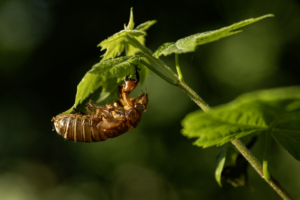
The bulk of this year’s cacophonous calls — sometimes exceeding 90 decibels — emanate from pint-sized passersby called periodical cicadas. Unlike their cousins, annual cicadas, the periodical broods emerge on an extended time scale spaced out by a prime number of years. This year, both 13-year and 17-year broods popped out to regale us with their springtime sounds.
Chief Photographer Jonathan Fredin captured stunning images of the species in all their flying, feeding, fleeting glory.

Periodical cicadas have red eyes, whereas their annual counterparts have black eyes.
For a deeper dive, we pestered NC State Entomologist Dr. Matt Bertone — who also has an eye for detail and incredible camera skills — for some fun facts about these funky bugs.
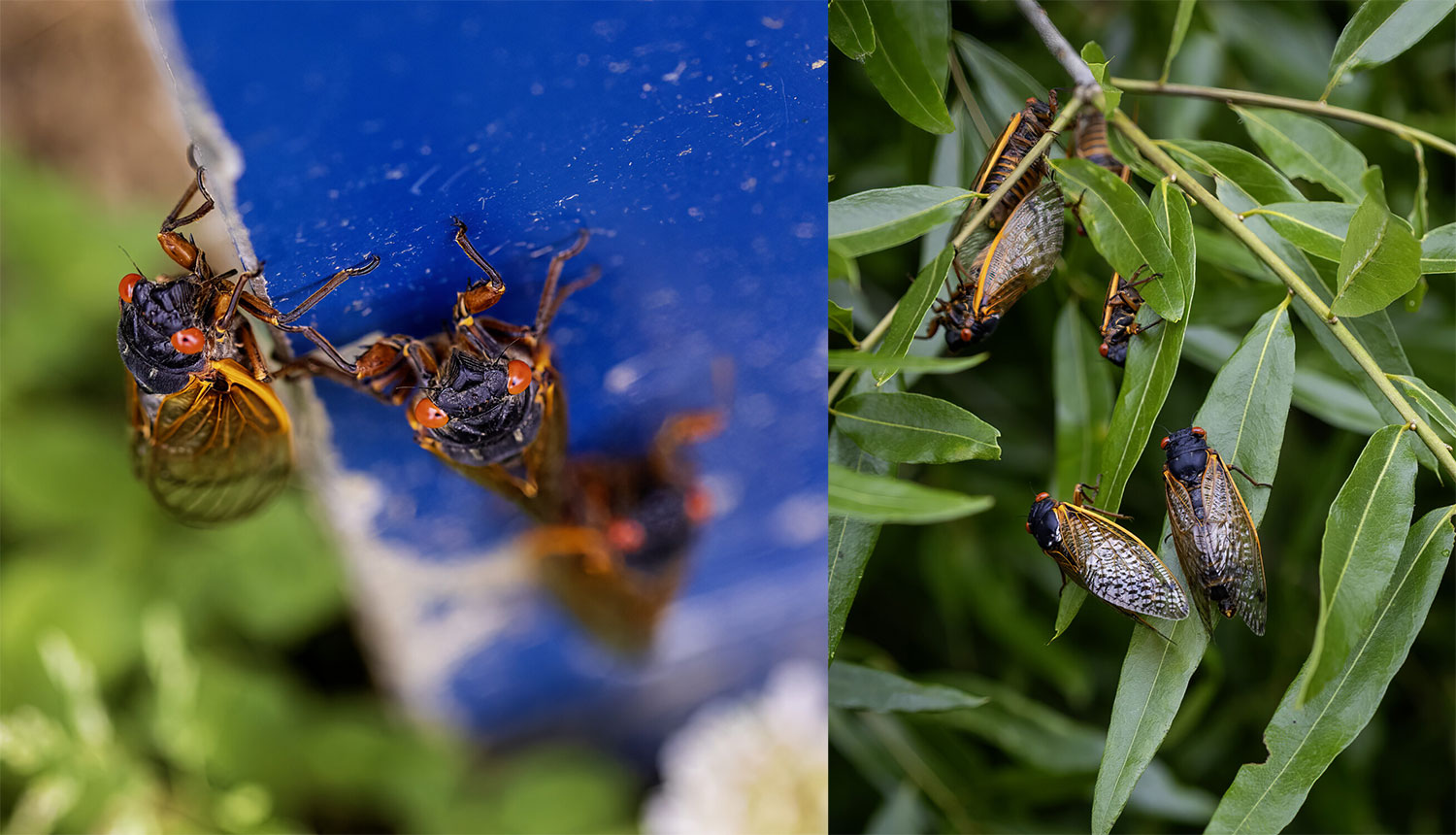
Why do they appear for such a short time and then disappear for years?
Unfortunately, we don’t know exactly why they are on this long, prime-number cycle. The thought is that they can avoid predators by being unpredictable, but who knows? One thing to note, though, is that they are still there under our feet in the intervening years, but just as subterranean, root-sucking nymphs.
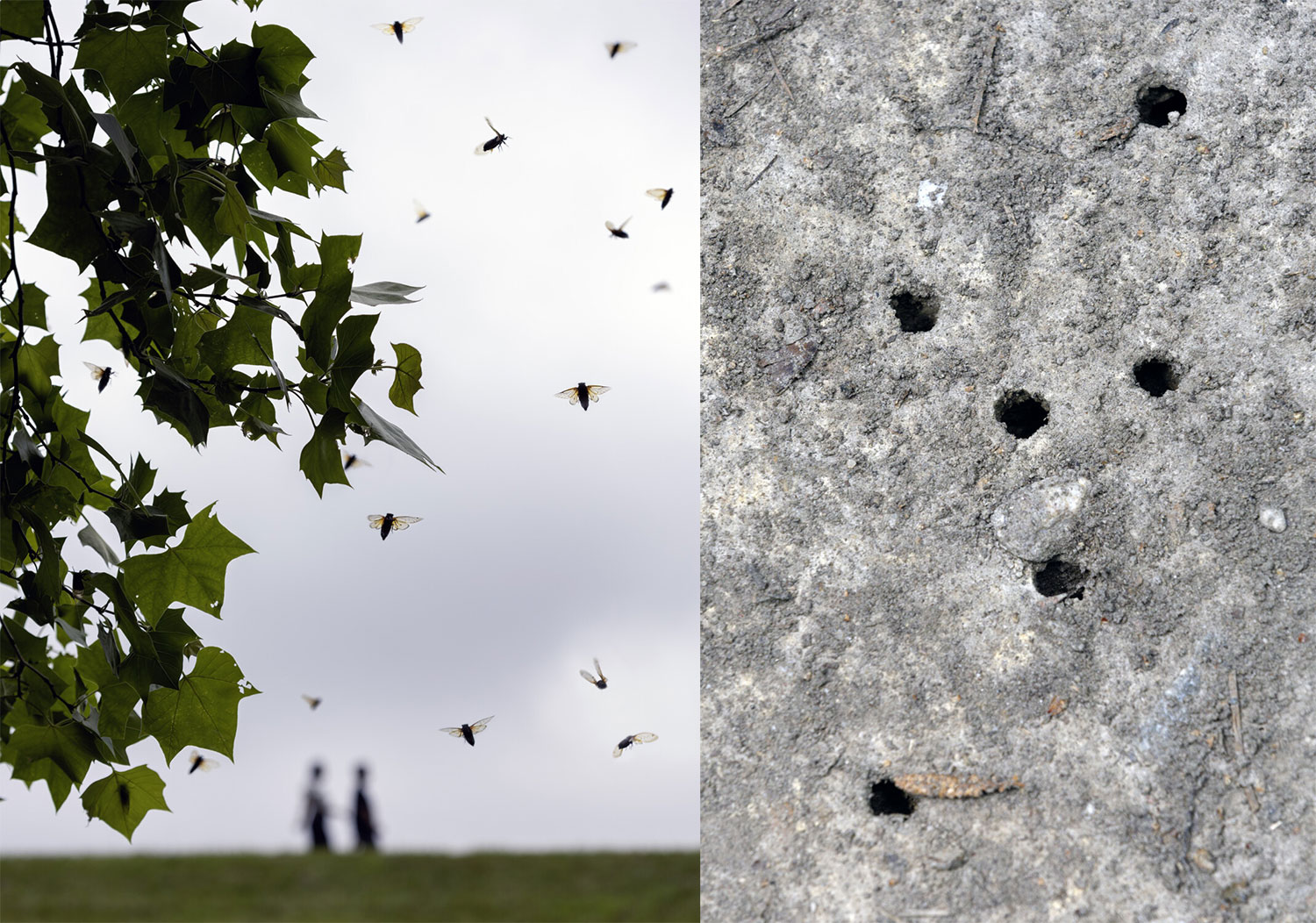
What’s up with the yelling?
It may sound like screaming to us, but the sounds male cicadas produce are used to attract mates. Thus, they must be very sweet sounding to the cicadas themselves! Each species has its own call, and males will even have a variety of calls for different stages of the courting and mating process.
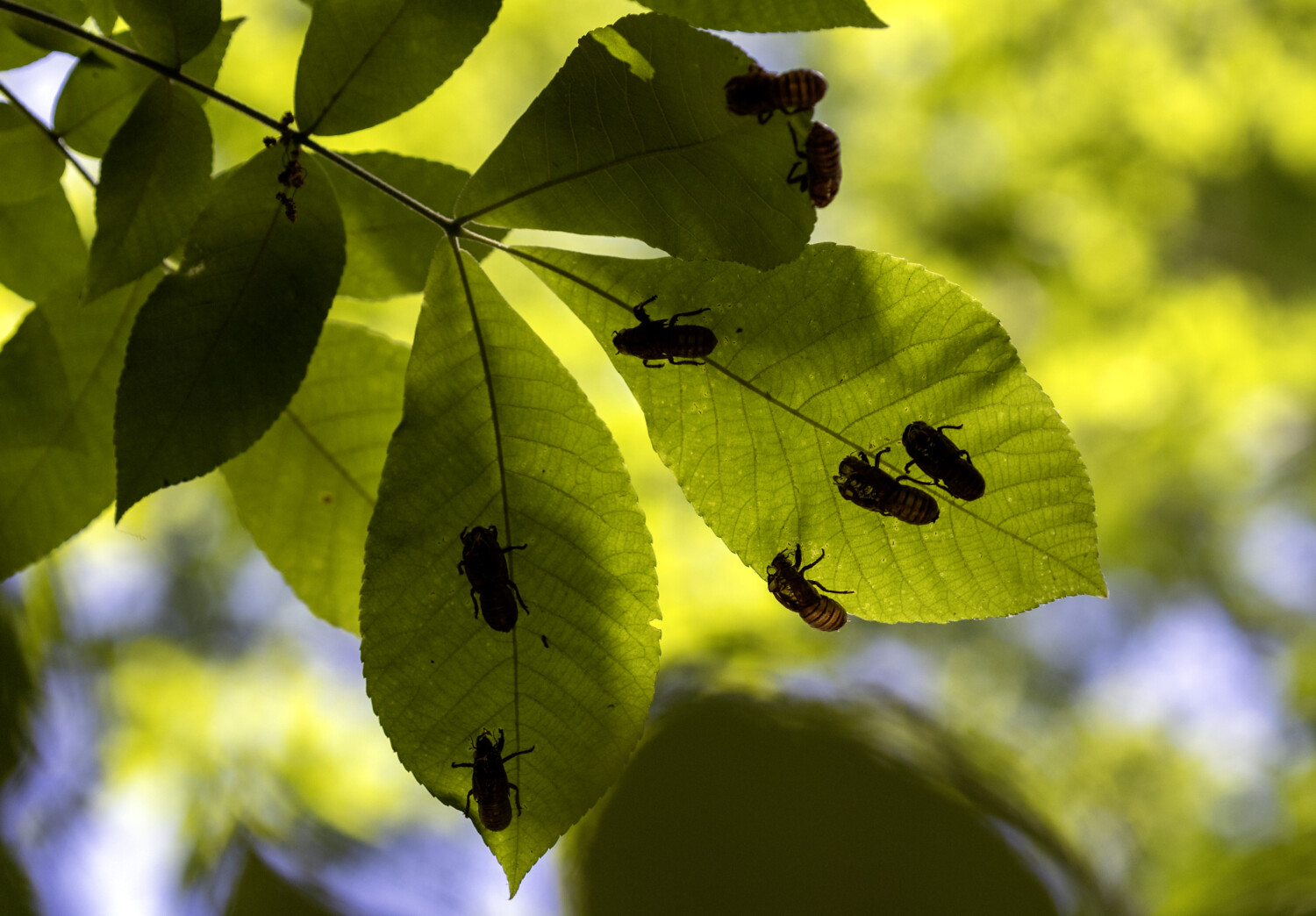
Cicadas feed on sap, or xylem fluid. Because it’s mostly water, they have to eat a lot — up to 300 times their bodyweight each day — which leads to copious amounts of liquid waste. Instead of peeing in droplets like most other insects, cicadas relieve themselves in streams more powerful than even some mammals! Learn all about their surprisingly fascinating bathroom habits from the folks at Scientific American.
Can you really eat them? Have YOU ever eaten them?
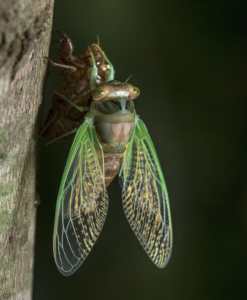
Black and green annual cicadas differ in appearance from their periodical brethren.
You can eat anything, once! But kidding aside, cicadas are not poisonous and are said to taste decent. The key, apparently, is to collect them a little bit after they’ve emerged from their nymphal skin, somewhat like soft-shelled crabs. I have to take the word of others, though, since I’m not adventurous enough to eat one!
Where do cicadas rank on your personal hierarchy of insects?
People who know me know I’m a fan of the weirder insects that would never get the press cicadas get, but for a popular critter they’re pretty amazing and hard not to love. I’d say they’re somewhere in the middle of the pack for me, but the rarity and impressive nature of their mass emergence bumps up periodical cicadas a little more in my mind.
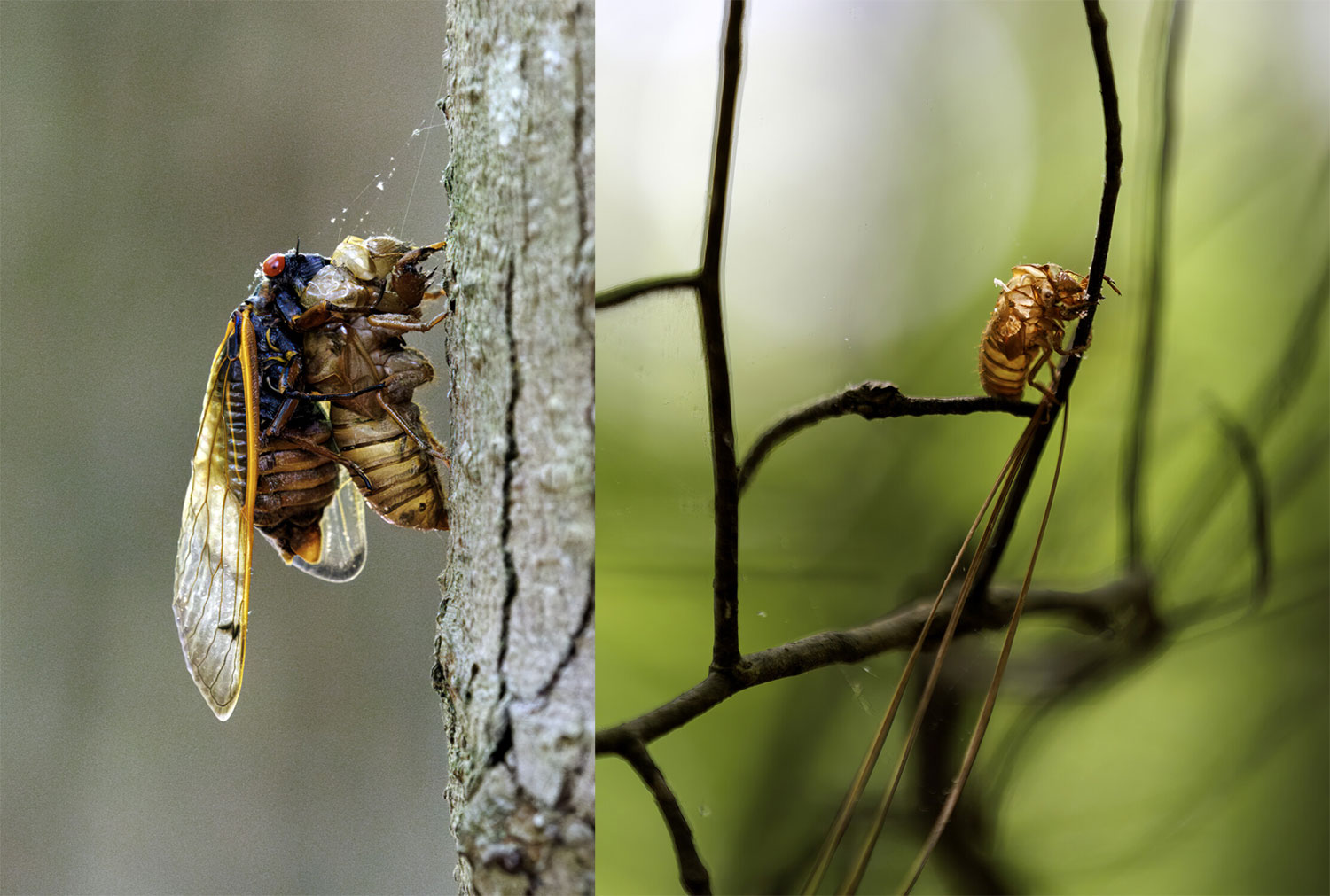
In the spring of a prime numbered year, they tunnel out and find a solid surface on which to molt, pushing out of the hard skin that’s a couple of sizes too small.
Tell us about the molty ghost-cicada shells they leave behind.
The “shells” are actually the shed skin (what we call exuviae) of the oldest nymph. When they are ready to make the trip above ground, the adult forms within this last nymph’s skin. Then the insect digs out of the ground, climbs a nearby surface, and wiggles its way out! This process is usually done at night, and can take an hour or so to complete. Once free of the skin, the cicada is pale before it hardens into the familiar cicada we know.
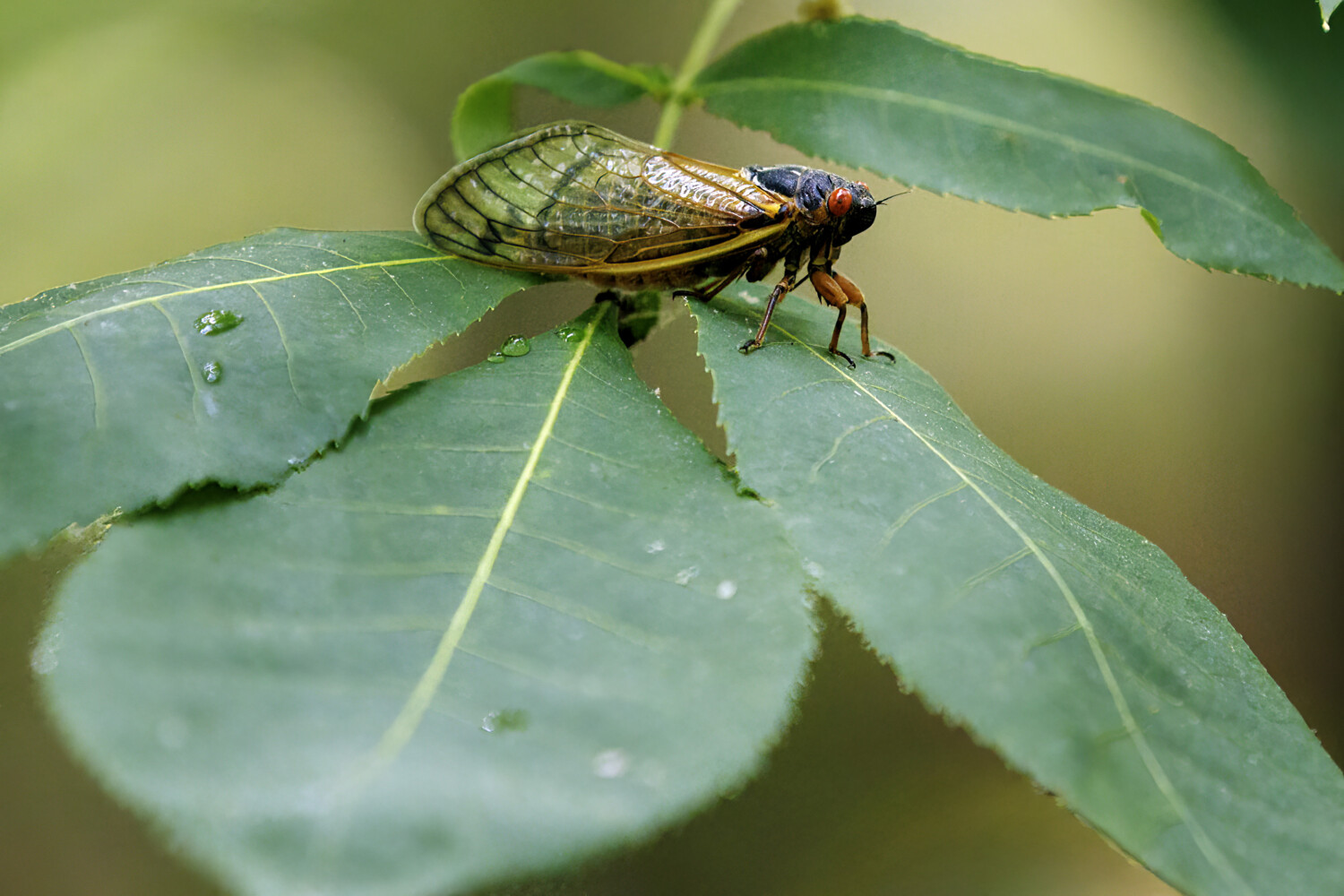
Any other intriguing cicada facts?
I think the most interesting thing I learned about these cicadas is that there are seven species of periodical cicadas, three 17-year and four 13-year species. They are together in broods only because they emerge on the same schedule, but there are species of 13-year cicadas that are more closely related to their 17-year counterparts, than to other species emerging in the same brood.
For more (surprisingly fascinating) information on cicadas, visit Everything You Need to Know About Periodical Cicadas from NC State and an in-depth FAQ on Periodical Cicadas from UConn.




